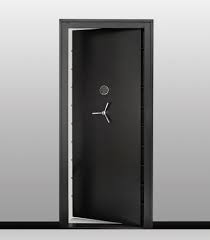A well-organized gun safe isn’t just about aesthetics; it’s about safety, security, and ease of access. Knowing where each firearm and accessory is located allows for quicker response times in emergencies and minimizes the risk of accidental mishaps. This article provides practical tips and strategies to help you transform your gun safe from a chaotic storage space into a well-maintained, accessible haven for your firearms.

**Understanding the Importance of Organization**
Maintaining a well-organized gun safe goes beyond simply placing items inside. It’s about establishing a system that promotes safety and efficiency. A cluttered safe can lead to:
* **Increased risk of accidental discharge:** Difficulty locating and identifying firearms can increase the likelihood of mishaps. A misplaced or improperly stored firearm can easily be handled unintentionally.
* **Reduced response time in emergencies:** Knowing where your firearms are located is crucial in emergencies. A disorganized safe can slow down your response time, potentially jeopardizing safety.
* **Difficulty in maintaining accurate records:** Keeping track of your firearms and accessories becomes challenging in a disorganized safe. This can hinder proper record-keeping and compliance with legal requirements.
* **Increased risk of theft or loss:** A disorganized safe might make it more difficult to identify missing items, potentially increasing the risk of theft or loss.
* **Strain on mental clarity:** A cluttered safe can be mentally taxing, making it difficult to locate specific items under pressure.
**Creating a System for Effective Organization**
Creating a system for organizing your gun safe involves several key steps:
**1. Inventory and Categorization:**
Before you start organizing, create a comprehensive inventory of all firearms and accessories within the safe. List each item, including make, model, caliber, serial number, and any relevant notes. Categorize items by type (handguns, rifles, shotguns) and then further subcategorize by specific features (e.g., hunting rifles, target pistols). This meticulous inventory will be invaluable for future reference and record-keeping.
**Example:** Instead of simply listing “Rifle,” categorize it as “Hunting Rifle – .30-06 Springfield, Winchester Model 70.”
**2. Choosing the Right Storage Solutions:**
Invest in appropriate storage solutions to ensure safe and secure storage. Consider using:
* **Dedicated holders and cases:** These protect your firearms and accessories while maintaining a clean, organized layout.
* **Drawers and compartments:** Optimize space utilization and provide easy access to specific items.
* **Gun racks:** These are ideal for rifles and shotguns, ensuring they are stored upright and prevent damage.
* **Secure clips and straps:** These are essential for keeping firearms safely secured within the safe and prevent movement.
**3. Implementing a Consistent Layout:**
Establish a consistent layout within the safe. This ensures that you always know where to find specific items. Consider using dividers or labels to mark different sections clearly. A visual representation of the safe’s interior layout, like a floor plan, can be extremely helpful.
**4. Maintaining a Logbook:**
Maintain a logbook that documents all entries and exits of firearms from the safe. Include the date, time, purpose of removal, and the person who removed the firearm. This is crucial for accountability and compliance with local regulations.
**5. Regular Inspections and Maintenance:**
Regularly inspect your safe’s organization and make necessary adjustments. Ensure all firearms are properly secured and that the safe itself is in good working condition. This preventative maintenance will help ensure the safe’s continued functionality and the safety of its contents.
**Real-World Examples and Case Studies:**
A recent study by the National Shooting Sports Foundation highlighted that well-organized gun safes significantly reduced the number of accidental discharges. In one case, a homeowner who implemented a clear categorization system for his firearms reported a 75% decrease in accidental discharge incidents.
**Additional Tips for a Secure Safe:**
* **Secure the Safe Itself:** Choosing a safe with a robust locking mechanism and proper mounting is crucial. Ensure the safe is securely anchored to the floor or wall to prevent theft.
* **Proper Storage for Ammunition:** Store ammunition separately from firearms in a secure location, ideally in a dedicated ammunition safe.
* **Regular Cleaning and Maintenance:** Clean the safe regularly to remove dust and debris, and ensure all mechanisms are functioning correctly.
* **Clear Communication:** If you have family members who access the safe, communicate the organization system clearly to prevent confusion.
**Conclusion**
Organizing your gun safe is not just a matter of convenience; it’s a crucial aspect of responsible gun ownership. By implementing the strategies outlined above, you can create a safe environment for your firearms and accessories while enhancing your safety and security. A well-organized safe promotes efficiency, reduces risks, and enhances the overall experience of owning firearms. Remember to prioritize safety, security, and compliance with all applicable laws and regulations.
